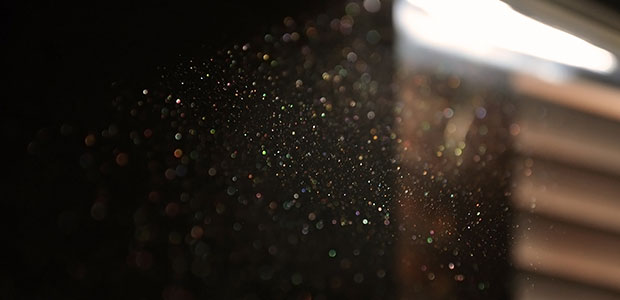
Combustible Dust Explosions: Identifying and Mitigating Risk
Combustible dust is a prominent threat in many workplaces, and it’s no wonder OSHA has a number of regulations and standards on the topic. Here is what you need to know about the hazards, causes, and risks of combustible dust in the workplace.
- By Lauren Holman
- Jan 22, 2020
Combustible dust, as the name eludes to, are small particles of dust that can become highly explosive under certain conditions. The Occupational Safety and Health Organization defines combustible dust as “a solid material composed of distinct particles or pieces, regardless of size, shape, or chemical composition, which presents a fire or deflagration hazard when suspended in air or some other oxidizing medium over a range of concentrations.”
Dust accumulates throughout the years, and any small fire or explosion that shakes the dust can cause it to ignite. This phenomenon is so dangerous because dust builds up everywhere, and even the smallest amount can cause a deadly explosion under the right conditions. Between the years 1980 and 2005, The U.S. Chemical Safety and Hazard Investigation Board has reported 119 deaths and 718 injuries that have resulted from combustible dust incidents.
Which Materials Classify as Combustible Dust Hazards?
Pesticides, rubber, pharmaceuticals, wood, textiles, chemical dust like sulfur or coal, and even agriculture products such as powdered milk, egg whites, sugar, flour, cornmeal, and grains are classified as combustible dust hazards. With these materials in mind, industries that are at the highest risk are coal mines, woodworking companies, food production, recycling organizations, and chemical manufacturers. Generally, dust is a by-product of any activity that involves activities such as transporting, processing, polishing, cutting, crushing, sifting, or mixing. As a whole, all industries and companies that generate dust may be at risk of a combustible dust accident. It is essential that companies act proactively to minimize their risk. That’s why proactive safety is especially important in combustible dust environments.
How Do Combustible Dust Incidents Happen?
For an incident to occur, five things must be present: a source of ignition, dispersion, confinement, oxygen, and the substance itself. If particles are dispersed, it means that they are spread out. Confinement refers to a space that is contained. The very nature of a confined space is what allows pressure to accumulate, which increases the risk of explosion.
You can learn more about the hazards associated with working in confined spaces to better understand how you can avoid a situation like this.
Combustible dust incidents often involve a primary and a secondary explosion. The primary blast is the result of the ignition of suspended dust in a confined space. This first explosion often shakes up other dust that has accumulated and triggers a secondary explosion, which is usually much more severe than the primary.
Identifying and Mitigating the Risk of Dust Explosions
The first question that all organizations should ask is whether they produce, manufacture, or work with any substance that can become a dust. Next, an acute awareness of all fire and ignition hazards in the workplace is essential. It is also important to identify areas in your workplace where dust has the potential to accumulate without being cleaned.
However, there are other hazards in the workplace you should be aware of, too. Good housekeeping is the best way to prevent combustible dust incidents. Organizations who take good care of their facilities experience fewer fires and explosions and are even more profitable.
Providing your company with dust removal systems, conducting regular inspections of confined and unused areas, and making sure employees are trained and knowledgeable on the risks associated with combustible dust can help to mitigate your company’s risk. The use of surfaces that minimize the amount of dust that can accumulate is also beneficial in reducing your company’s risk of a combustible dust incident.
Furthermore, it is essential to ensure that all electrical equipment is working well, that heating systems are stored away from areas where dust could build-up, and that the use of open flame and ignition of any sort is regulated and carefully monitored. The use of misting can also prevent dust from dispersing, which will reduce the probability of spreading out and combusting. Lastly, it is essential that all workers are equipped with properly functioning protective wear, including adequate eye wear, respirators, and appropriate clothing for the job.
Combustible dust incidents can occur in nearly any industry. It is critical that employers and employees are educated and knowledgeable of the associated risks and act proactively to mitigate them.